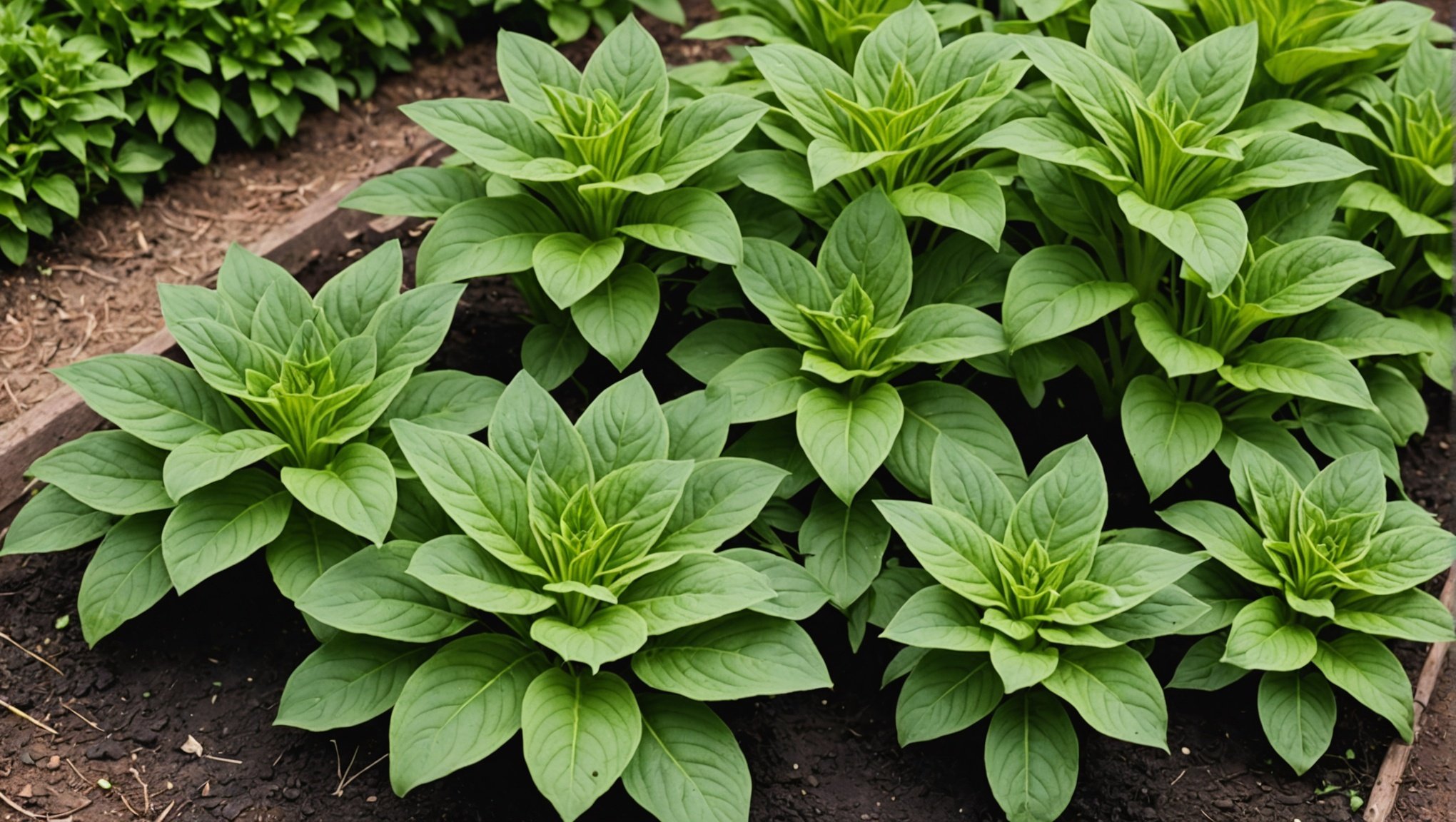Top Pest-Repelling Plants for a Thriving Home Vegetable Garden
Creating a thriving home vegetable garden is a rewarding endeavor, but it can be quickly derailed by unwanted pests. Instead of relying on chemical pesticides, many gardeners turn to natural pest-repelling plants to keep their gardens healthy and pest-free. Here’s a comprehensive guide to the top pest-repelling plants that can help you maintain a vibrant and productive vegetable garden.
Why Use Pest-Repelling Plants?
Before we dive into the specific plants, it’s important to understand why using pest-repelling plants is a smart strategy for gardeners. Here are a few key reasons:
Also to see : Essential Smart Home Features for a Tech-Savvy and Elderly-Friendly Living Space
- Natural Pest Control: These plants offer a natural and non-toxic way to repel pests, reducing the need for chemical pesticides that can harm beneficial insects and the environment.
- Companion Planting: Many pest-repelling plants can be used in companion planting, where they are planted alongside vegetables to enhance growth and reduce pest issues.
- Aesthetic Appeal: These plants often add beauty and fragrance to your garden, making it a more enjoyable space.
- Multi-Purpose: Several of these plants are not only mosquito repellents but also culinary herbs, adding an extra layer of utility to your garden.
Top Pest-Repelling Plants
Here are some of the most effective pest-repelling plants you can include in your vegetable garden.
Citronella Grass
Citronella grass is perhaps the most well-known mosquito-repelling plant. Known as the “mosquito plant,” it contains oils that keep mosquitoes away. For quick protection, you can crush a citronella leaf and rub it on your skin, providing natural repellent for several hours.
Have you seen this : Creative Ways to Blend a Modern Aquarium into Your Minimalist Living Room Aesthetic
- Growing Conditions: Citronella thrives in full sun and well-drained soil. It can be planted directly in the ground or in large planters.
- Tips: Look for true varieties like Cybopogon nardus or Citronella winterianus for the most potent repelling qualities. Citronella can be confused with lemongrass, but both have intense mosquito-repelling properties.
Basil
Basil is a powerhouse in the garden, not just for its culinary uses but also for its pest-repelling properties. Its strong scent naturally repels mosquitoes, and a 2009 study found that basil essential oil is toxic to mosquito larvae.
- Growing Conditions: Plant basil in sunny spots and keep the soil consistently moist. It can be grown in garden beds near outdoor hangouts or in pots on windowsills.
- Tips: Basil is a great companion plant for vegetables like tomatoes and peppers. It enhances their flavor and helps repel pests that target these plants.
Marigolds
Marigolds are easy-to-grow flowers that repel a variety of pests, including mosquitoes. They contain pyrethrum, an ingredient commonly found in insect repellents.
- Growing Conditions: Marigolds thrive in full sunlight and fertile soil. Plant them in pots near home entrances or common entry points for mosquitoes.
- Tips: Marigolds are low-maintenance and can be grown from seed or purchased as starter plants. They add a vibrant splash of color to your garden while keeping pests away.
Catnip
Catnip is surprisingly effective at repelling mosquitoes. Research from Iowa State University shows that nepetalactone, the essential oil in catnip, repels mosquitoes 10 times better than DEET.
- Growing Conditions: Catnip can be invasive, so it’s best to grow it in pots on your porch or patio. It thrives in well-drained soil and partial shade.
- Tips: You can also use catnip as a topical oil for extra protection. However, be cautious of its invasive properties and keep it under control.
Rosemary
Rosemary is a versatile herb that not only adds flavor to your cooking but also repels insects. Its distinctive scent drives away mosquitoes, and rubbing a few sprigs over exposed skin can provide additional protection.
- Growing Conditions: Rosemary loves dry corners of the garden or windowsills that get full sun. Let it dry out between waterings for optimal health.
- Tips: Rosemary smoke from a grill or fire pit can also act as an extra repellent. It’s also a deterrent to cats if you have strays in your yard.
How to Use These Plants Effectively
To get the most out of these pest-repelling plants, here are some practical tips:
Companion Planting
Companion planting is a technique where different plants are grown together to enhance growth and reduce pest issues. Here are some beneficial combinations:
- Basil and Tomatoes: Planting basil near tomatoes can enhance their flavor and repel pests like whiteflies and aphids.
- Marigolds and Cabbage: Marigolds repel cabbage worms and other pests that target brassicas.
- Citronella and Lavender: Planting citronella near lavender can create a potent mosquito-repelling combination.
Plant Placement
The placement of these plants can significantly impact their effectiveness:
- Near Entry Points: Plant marigolds and citronella near home entrances or common entry points for mosquitoes to maximize their repelling effect.
- Around Vegetable Beds: Plant basil, rosemary, and other herbs around vegetable beds to create a protective barrier against pests.
- In Pots: Use pots for invasive plants like catnip and lemon balm to keep them under control while still benefiting from their pest-repelling properties.
Additional Tips for a Pest-Free Garden
Here are some additional strategies to help keep your garden pest-free:
Attract Beneficial Insects
Attracting beneficial insects like bees, butterflies, and ladybugs can help control pest populations naturally. Here are some plants that attract these beneficial insects:
- Sunflowers: Attract bees and butterflies.
- Dill: Attracts ladybugs and lacewings.
- Nasturtiums: Attracts aphid-eating insects like lacewings and hoverflies.
Maintain Garden Health
A healthy garden is less susceptible to pest issues. Here are some tips to maintain garden health:
- Soil Quality: Ensure your soil is rich in organic matter. Healthy soil supports healthy plants that are more resistant to pests.
- Watering: Avoid overwatering, which can attract pests and create an environment conducive to their growth.
- Pruning: Regular pruning helps keep plants healthy and encourages bushier growth, which can boost their pest-repelling power.
Detailed List of Pest-Repelling Plants
Here is a detailed list of some of the top pest-repelling plants you can use in your garden:
-
Citronella Grass
-
Repels: Mosquitoes
-
Growing Conditions: Full sun, well-drained soil
-
Tips: Crush leaves for topical use, plant near other repellent plants
-
Basil
-
Repels: Mosquitoes, whiteflies, aphids
-
Growing Conditions: Sunny spots, consistently moist soil
-
Tips: Companion plant with tomatoes and peppers, toxic to mosquito larvae
-
Marigolds
-
Repels: Mosquitoes, cabbage worms, aphids
-
Growing Conditions: Full sunlight, fertile soil
-
Tips: Plant near home entrances, low-maintenance
-
Catnip
-
Repels: Mosquitoes
-
Growing Conditions: Well-drained soil, partial shade
-
Tips: Invasive, grow in pots, use as topical oil
-
Rosemary
-
Repels: Mosquitoes, cats
-
Growing Conditions: Dry corners, full sun
-
Tips: Rub on skin for protection, smoke from grill or fire pit
-
Lemon Balm
-
Repels: Mosquitoes
-
Growing Conditions: Well-drained soil, partial shade
-
Tips: Invasive, grow in pots, contains citronellal
-
Pennyroyal
-
Repels: Mosquitoes
-
Growing Conditions: Well-drained soil, partial shade
-
Tips: Toxic if ingested, crush leaves for extra protection
-
Feverfew
-
Repels: Mosquitoes
-
Growing Conditions: Most garden conditions
-
Tips: Plant near outdoor seating areas, contains pyrethrum
-
Scented Geraniums
-
Repels: Mosquitoes
-
Growing Conditions: Warm, sunny, dry climates
-
Tips: Regular pruning, bring indoors during winter
Comparative Table of Pest-Repelling Plants
Here is a comparative table to help you choose the right plants for your garden:
| Plant | Repels | Growing Conditions | Tips |
|---|---|---|---|
| Citronella | Mosquitoes | Full sun, well-drained soil | Crush leaves for topical use, plant near other repellent plants |
| Basil | Mosquitoes, whiteflies, aphids | Sunny spots, consistently moist soil | Companion plant with tomatoes and peppers, toxic to mosquito larvae |
| Marigolds | Mosquitoes, cabbage worms, aphids | Full sunlight, fertile soil | Plant near home entrances, low-maintenance |
| Catnip | Mosquitoes | Well-drained soil, partial shade | Invasive, grow in pots, use as topical oil |
| Rosemary | Mosquitoes, cats | Dry corners, full sun | Rub on skin for protection, smoke from grill or fire pit |
| Lemon Balm | Mosquitoes | Well-drained soil, partial shade | Invasive, grow in pots, contains citronellal |
| Pennyroyal | Mosquitoes | Well-drained soil, partial shade | Toxic if ingested, crush leaves for extra protection |
| Feverfew | Mosquitoes | Most garden conditions | Plant near outdoor seating areas, contains pyrethrum |
| Scented Geraniums | Mosquitoes | Warm, sunny, dry climates | Regular pruning, bring indoors during winter |
Quotes from Experts
Here are some insights from experts in the field:
- “Gardeners highly recommend planting basil in the garden—thanks to its strong scent, it’s a mosquito deterrent,” says Matteo Grader, a pest-control specialist for London-based Panther Pest Control.
- “Citronella has long been favored as one of the most effective plants that repel mosquitoes,” notes an article from Today’s Homeowner.
Creating a thriving home vegetable garden involves more than just planting vegetables; it requires a holistic approach that includes natural pest control. By incorporating pest-repelling plants into your garden, you can maintain a healthy and productive garden without relying on chemical pesticides. Whether you choose citronella, basil, marigolds, or any of the other plants mentioned, these natural solutions can help you enjoy a pest-free garden while adding beauty and fragrance to your outdoor space.
Remember, the key to a successful garden is balance and diversity. By combining these pest-repelling plants with good gardening practices and companion planting, you can create a garden that is not only productive but also a haven for beneficial insects and a joy to spend time in. Happy gardening











